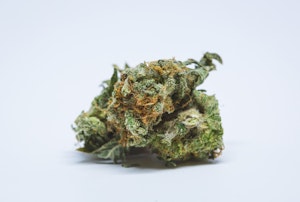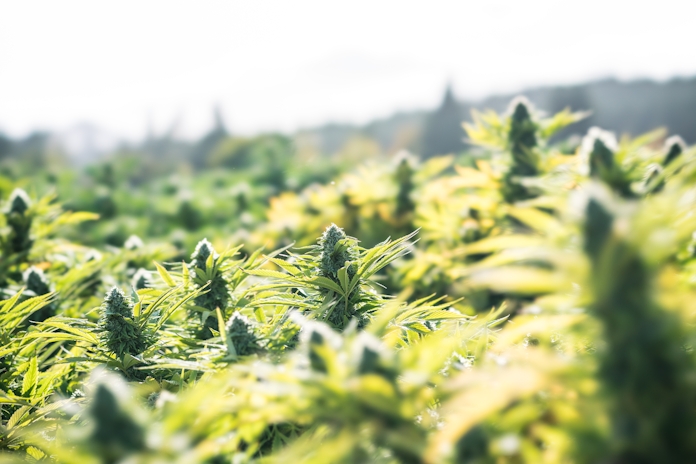
Photo by HubbardSteve / Adobe Stock Photo
How To Grow Marijuana Outdoors: The Complete Guide
Want to grow your own sunkissed cannabis? Here's everything you should know. Created with ILGM.
Growing marijuana is an entertaining hobby regardless of whether you do it indoors or outdoors. Sure, if this is your business, you’ll probably want to look at indoor operations as they are more manageable and reliable.
However:
Outdoor grows have a certain appeal to them that I can’t explain. Somehow, they just feel more natural.
But naturality comes with an obvious downside. It’s a lot more difficult to control and ensure quality flowers.
Nevertheless:
There are ways to do it right and benefits that an indoor operation cannot offer.
Benefits Of Outdoor Grows & Other Things To Know
Outdoor growth operations work. And we don’t have to be leading one to prove it.
In the very beginning, marijuana was growing outside willy-nilly. I’ve always thought about that when I write about growing weed or when I tend to my plants.
So why not let it grow outside willy-nilly in your backyard?
Maybe take more care of it than it would in the wild all by its lonesome, but there shouldn’t be a reason for you not to be able to grow it unless the climate is incredibly harsh, which then makes an outdoor growth operation a futile enterprise.
Because if there is one thing about proper outdoor growing, it is that you’re left at the mercy of the climate you live in.
Nevertheless:
If you’re gifted with the proper climate, then there is no doubt that outdoor operations work… and they work well.
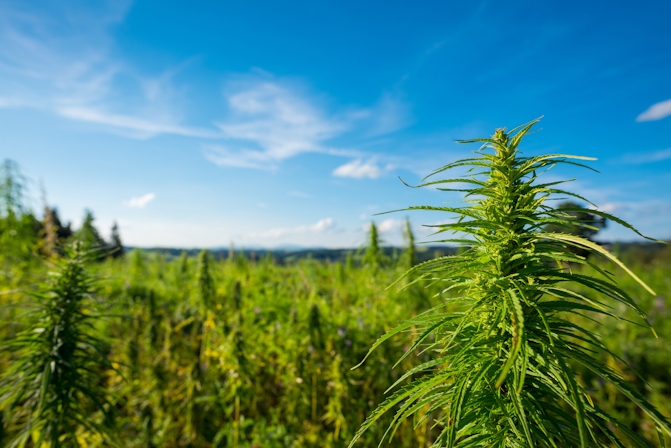
Photo by Dmytro S / Adobe Stock Photo
The perfect climate is… well… the perfect climate. Not too humid, not too dry, not too cold, not too hot. In other words, you’ll need to move to Colombia.
But not really.
There are ways around crappy weather for an outdoor grow, and there are ways around seasonal weather. Adjusting watering quantities is one thing, but there are a few others we’ll learn of up ahead.
For now, let’s focus on the benefits of growing weed outdoors:
- Cheaper: In the first place, the sun is doing the heavy lifting for you, so you won’t have to set up LED lighting that will ramp up your electricity bill. Additionally, you’ll save on the initial lighting fee for the hardware used, which can turn out to be a heavy investment in some cases.
- Bigger Yields: A plant can only yield as much marijuana as it can grow, literally. For that reason, a bigger growing area will likely signify significantly bigger yields. When the plant can grow taller and wider, the buds can too. Indoor grows require a higher initial investment and may provide a lower return on it. But that’s if you consider freshly harvested flower a return on the investment.
- Environmentally Friendly: Indoor grows require electricity and purchase tons of other materials that you would otherwise not need in an outdoor setting.
Click here for our full guide on indoor vs outdoor cannabis growing.
Step-By-Step Guide To Outdoor Cannabis Grows
Here’s everything you need to know to get a successful outdoor cannabis grow.
Planning The Growth Cycle
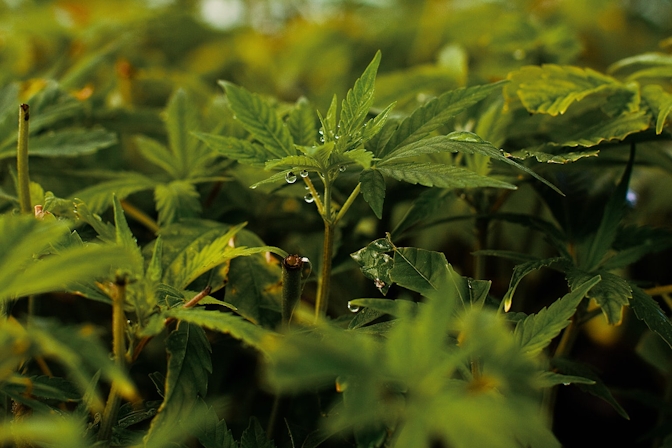
Photo by Uriel Sinai / Getty Images
Outdoor grows do have a disadvantage in comparison to indoor operations. But it all depends on how you look at things.
You’ll have to look at the sunlight conditions, temperature, and overall climate conditions weeks in advance with an outdoor grow. If you don’t, then your plants reach the flowering stage when the weather conditions could harm them. Remember, you won’t be able to adjust light schedules as you would in an indoor grow operation.
But planning ahead of the cannabis cycle doesn’t necessarily need to be a disadvantage. It can also be something fun to do and a part of a more ‘natural’ growing experience. At the end of the day, this is a hobby, and you might as well enjoy all the stages of it.
Choosing Your Spot

Photo by Shannon Price / Adobe Stock Photo
With outdoor harvests, you have the option of ‘diversifying’ your location. Especially if you own a garden, while this makes it fun and could help you decorate your backyard, it does come with a few conditions that need to be cared for.
Outdoor grows are less private, so choosing your spot well will be the difference between your neighbors knowing what you’re doing or not. Not that there’s anything wrong with it, but privacy is essential to some people.
Security can also be an issue. Having a priced possession just sitting outside could attract unwanted attention. Even wild animals could pose a threat to your plants.
A more technical item on the list is that your location will determine how much sunlight the plant gets. Hence, how much and how well your plant will grow, and because outdoor plants tend to produce much taller and broader than indoor plants, it would be best if you place them in a place where they can grow at least 12 feet tall, just in case.
In some cases, you will have an outdoor area but not a proper patch of land you can do your planting in. If that is the scenario, you’ll have to choose a pot to do your planting. Just make sure that you can protect the pot when the temperature is scorching because it can overheat and damage your cannabis plant’s roots.
With outdoor cannabis, you can go all the from a huge piece of land to just a few plants outside in your backyard.
Choosing A Growing Medium
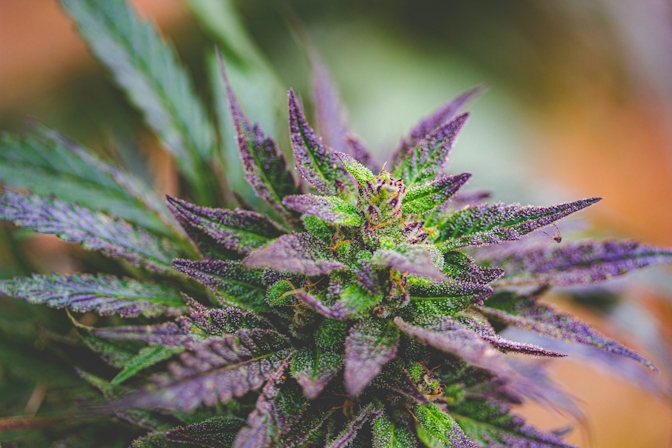
Chris Lillie / Unsplash
You’re growing outdoors, so obviously, the soil won’t need to change much from what you plant your flowers in. Unless you don’t have an actual garden or just because you prefer to use a pot for whatever reason. In which case, you’ll have three options:
Although:
Hydroponics doesn’t make sense for an outdoor grow, but who knows, maybe you’ll want to try something different.
Potting mixes and alternative mediums are a good option and could turn out to be very effective. But the best option will always be homemade compost & natural soil to grow organic marijuana. At least that’s been my experience and suggestion in my earlier posts, so I’ll stand by it now.
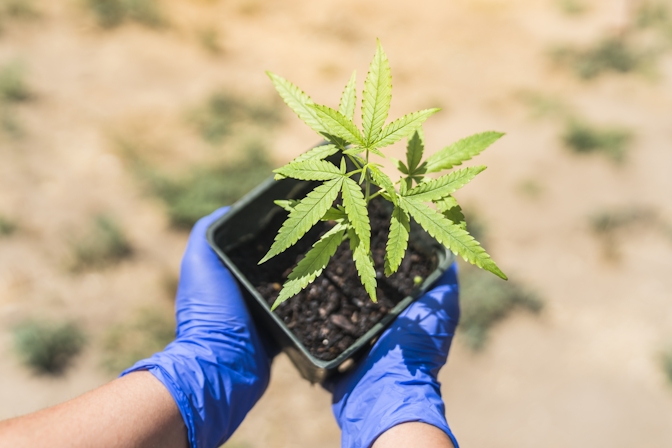
Photo by checubus / Adobe Stock Photo
Regardless of whether you are growing on a patch of land, then you’ll know that there are three different kinds of organic matter you can grow in:
If you’re growing on a patch of land, then you’ll know which type of soil you’re working with once you get your soil tested. If growing in pots, you can pick soil from your land or purchase it.
If you’re set on planting in your garden, but your soil is not the best, not to worry. You’ll be able to treat your soil if needed using a variety of different products.
The best type of soil is probably silt. Because it’s capable of warming quickly, holding moisture, and draining well. Additionally, it also contains lots of nutrients, which is something your plant will thank you for.
Purchase Additional Nutrients

Photography by Kaya Blaze Kelley for Herb
Your local Home Depot and even Amazon sell plenty of cannabis nutrients and will be able to help you with this. But standard fertilizer should do the trick for most of what you need.
Here’s our guide with the best weed fertilizers on the market.
Choose Your Strain & Purchase Seeds
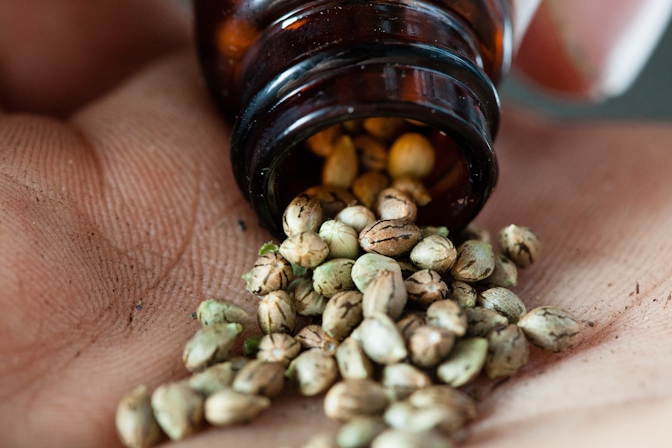
Photo by Eric Limon / Adobe Stock Photo
The previous steps on the list are all prep steps. Things that you need to do to increase the probability of a successful grow.
But all of them would prove fruitless if you don’t have the seeds for it.
Fortunately, this step is quite simple. All you have to do is hop on a trusted and reliable seed bank website like ILGM. On it, you’ll find seed deals and seed variety packs fit for the grower who wants a diverse crop.
ILGM is a seed bank where you’ll find a wide variety of seeds with genetics you can trust. And if for some reason, you’re not sure of what strains you want or can grow, then ILGM can support you and provide a series of grow guides for every step of the process.
Another subject to address in this step is whether you want to go with seeds or clones. Seeds will require a couple more weeks of growth, so if the climate changes a bit too fast and the seasons require you to rush it, a clone might be the best option.
Clones are small plants that are just beginning to pop out of the soil, allowing you to skip the germination process entirely.
If time is even more scarce, another good option is to purchase auto-flowering seeds. This type of seed will start to bloom as soon as the plant reaches maturity, regardless of how much sunlight exposure the season can give. A nice feature to have when you live in a location with seasons.
However:
Autoflowering seeds have a disadvantage; cannabis grown from auto-flowering seeds tends to be less potent.
Germination Process

Photo by cendeced / Adobe Stock Photo
Cannabis seed germination is when the seed breaks open and lets the plant’s stem sprouts from the seed for the first time. It takes about 3-7 days, and it can be done in one of two ways:
- Germination Trays: These are small plastic trays that look like ice cube trays, which you might also be able to use for germination, now that I think of it. In each cubicle, you’ll place a full serving of solid and dig the seed into the small portion of the soil. For about a week, you’ll water the germination trays regularly until the seedling sprouts up from the soil. You can find germination trays at your local hardware or garden store.
- Paper Tower Method: The paper towel method involves placing your seed in a damp paper towel folded down the middle. The paper towel and seeds go on a plat which is then covered by a second plat. Regularly check on your seedling’s process. When the seedling has sprouted, take it and plant it in your patch of land or pot.
Vegetative Stage
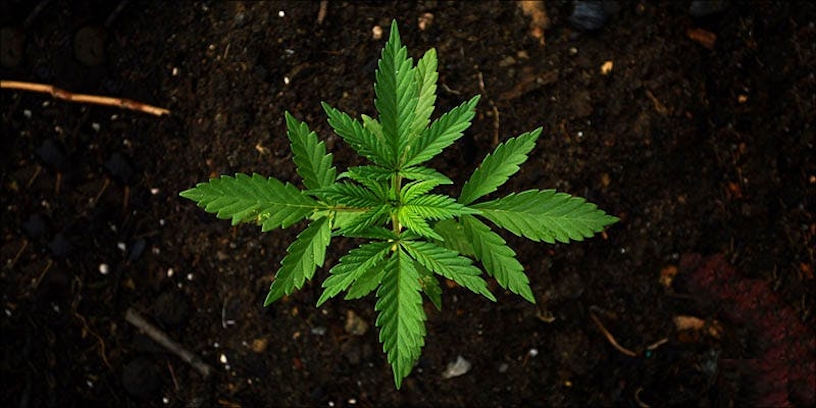
This stage is where the seedling ceases to be a seedling and becomes a plant for the first time. Leaves will start to grow, but there won’t be a flower to trim. This is basically a young plant.
This part of the process is where your plant needs the most attention. You’ll need to change watering and adjust sun exposure as much as possible, depending on how strong or weak your plant is looking.
Flowering Stage

The flowering stage is where your plant’s flower buds will start to show.
The ideal temperatures for this stage are 18-26 C. So at the beginning of the planting process, you’ll need to make sure that by the time your plant reaches the flowering stage, the season’s temperature will remain within this range.
Of course, it snowed in Texas in 2021, so all you can do is plan and hope for the best.
But perhaps the most important thing to do at this stage is to identify your plant’s gender.
Only female plants grow smokable flowers, while male plants do not. So, if you’re looking to harvest your flower buds and don’t want to purchase seeds as a ‘hit-or-miss,’ then it’s always good that seed banks like ILGM offer the option of purchasing feminized seeds from the beginning.
You can identify if a plant is female because it will start growing pistils on the top branches’ joints. Pistils or calyxes are small white hairlike structures that will keep growing and eventually develop into bushy flowers.
Males can be identified because instead of growing pistils, they grow pollen sacs (small green balls). Pollen sacs stay ‘unsprouted,’ and you won’t be able to spot any pistils at all.
Harvest Stage
The harvest window starts when flowers stop growing white hairs, and the state of the existing white hairs will tell you a lot about the type of quality of flower you are trimming:
- When approximately half of the white hairs have turned darker, this means a low potency yield.
- When a little more than half of the hairs have changed, this means maximum THC potencies.
- When most hairs have turned darker, it likely means you’ll get a potent relaxing effect but a lower THC content.
Drying & Curing Weed
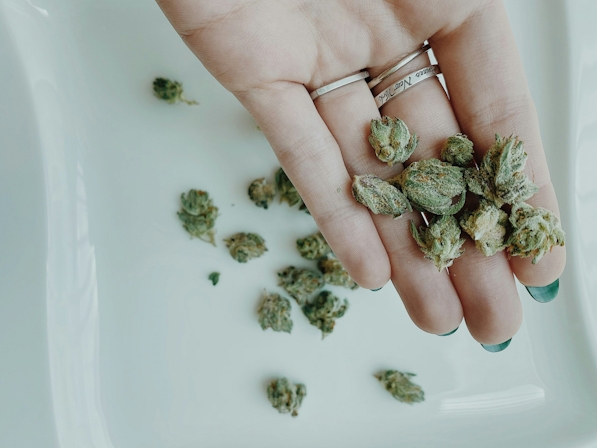
nicole plunkett / Unsplash
This is the final step of the growing process, and it applies to indoor and outdoor grows.
The drying and curing stage is where you’ll take your trimmed buds and hang them to dry. You’ll then take these dried buds and place them in jars for curing. If you wish to know more details, click here.
Herb Recommended Products:
READ MORE


